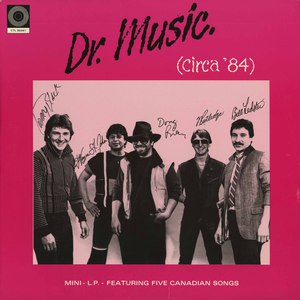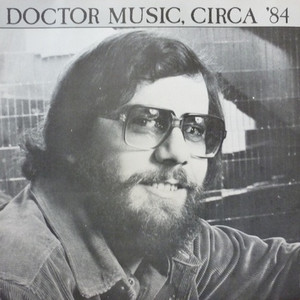Dr. Music
Websites:
No
Origin:
Toronto, Ontario, 🇨🇦
Biography:
Dr. Music: Canada’s Jazz-Rock Innovators
Dr. Music, led by the legendary Doug Riley, was a groundbreaking Canadian ensemble that blurred the lines between jazz, rock, and gospel. Active primarily in the early 1970s, the group’s lush harmonies, intricate arrangements, and diverse instrumentation earned them a unique place in Canadian music history. Though their lifespan as a band was brief, Dr. Music’s impact continues to resonate with fans and musicians alike.
The Vision of Doug Riley
Doug Riley, affectionately known as "Dr. Music," was the heart and soul of the group. A classically trained pianist and composer, Riley’s innovative approach to music brought together the sophistication of jazz with the accessibility of rock. Tasked with assembling a band for The Ray Stevens Show in 1969, Riley handpicked some of Canada’s top vocalists and instrumentalists, forming what would become Dr. Music. After the show’s cancellation in 1970, the band evolved into a recording and touring group, releasing a series of critically acclaimed albums.
The 1972 Album: A Canadian Classic
Dr. Music’s self-titled debut album, released in 1972, remains a highlight of the band’s career. The record’s rich harmonies and full instrumental arrangements showcased the group’s versatility, blending jazz-rock grooves with gospel-inspired vocals. Songs like Sun Goes By, One More Mountain to Climb, and Try a Little Harder became staples on Canadian radio, with Sun Goes By reaching #23 on the charts.
The album’s intricate compositions and vibrant energy captured the cultural zeitgeist of the early 1970s, offering a soundtrack to a transformative era. Its enduring appeal speaks to the timelessness of Dr. Music’s artistry, with fans continuing to rediscover the record’s magic decades later.
Evolution and Notable Members
Dr. Music was as much a collective as a band, with its lineup shifting across its lifespan. The 1972 ensemble included Doug Riley on keyboards, Bruce Cassidy on trumpet and flugelhorn, Brenda Gordon (later Brenda Russell) on vocals, and a host of other talented musicians.
Bruce Cassidy, for instance, went on to play with iconic groups like Lighthouse and Blood, Sweat & Tears, while Brenda Russell built a successful solo career, penning hits like Piano in the Dark and contributing to the Broadway adaptation of The Color Purple. These alumni highlight the band’s role as a springboard for exceptional talent.
A Progressive Journey
Dr. Music continued to evolve with subsequent albums, including Dr. Music II (1973) and Bedtime Story (1974). The band transitioned from gospel-rock to a more jazz-centric sound, with Riley’s progressive compositions taking center stage. Tracks like Dreams and Bedtime Story demonstrated the band’s ability to explore new musical territories while maintaining their distinctive style.
Legacy and Rediscovery
Though Dr. Music formally disbanded in 1977, their influence remains undeniable. Doug Riley’s contributions to Canadian music extended far beyond the band, as he collaborated with artists like Ray Charles, Anne Murray, and Gordon Lightfoot, and earned accolades such as the Order of Canada.
Dr. Music’s recordings continue to captivate new listeners, offering a rich blend of innovation and nostalgia. Their music serves as a reminder of a time when creativity and collaboration reigned, leaving a lasting mark on Canada’s cultural landscape.
For those who appreciate the artistry of jazz-rock fusion and the timeless appeal of harmonically rich, instrumentally complex music, Dr. Music’s legacy is a treasure waiting to be rediscovered.












